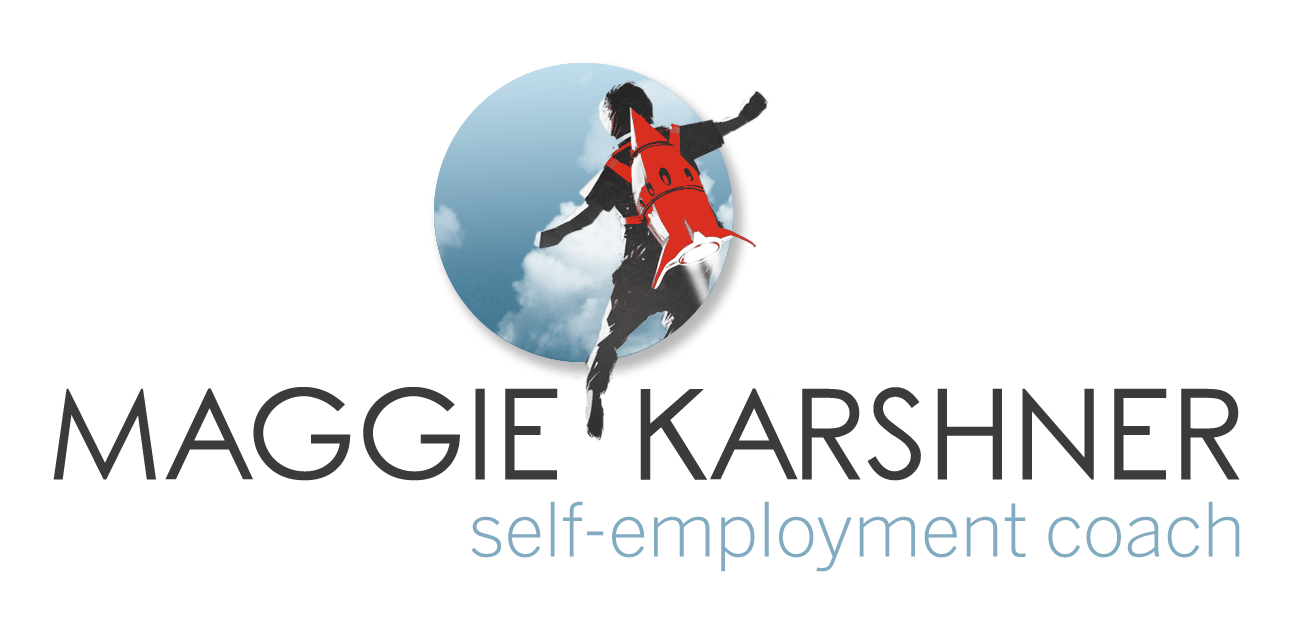How to Demystify Customer Ease: a Proven Method to Increase Leads
/Today I'm launching my war against the contact form! Yeah, who am I kidding? I'm not waging any wars here! But also, if folks have to submit a contact form or email you in order to get on your calendar... there's a better way. And it's not a "nice to have." It is a MUST-have! (And this is coming from someone who does not believe in "must haves!")
One thing often overlooked by first-time business owners is how important ease is for consumers. They'll rarely say this to you, but it is a huge factor. Consider the last time you were shopping on the internet. If you couldn't find the price or weren't sure the company was reputable, would you purchase? At minimum it'd give you pause, right? If you're really interested you might hunt for this info. Or you might take a leap and proceed without this information. But those both mean that the not-completely-dedicated customers won't buy. As a business owner, you need customers regardless of how much effort they put into their purchasing process.
This is why I advocate for having plenty of information on your website in a well-organized structure. (I go into this in detail in my Launch Pad lesson Clarifying Your Message and Writing Website Content.) This is key for allowing the customer to take the next step toward their purchase. To proceed they need to be comfortable with the information they've received so far. They also need to feel confident that a solution is likely if they take more action.
Once the customer has all the information they need, clearing a path to an instant purchase drives all of online commerce. It's a large part of what drove PayPal's growth. It's also what underpins Amazon's "Buy Now" button. Once the customer has decided to buy, get that transaction paid for ASAP. Give them that instant gratification dopamine hit.
For those of us providing services, there is no "buy now" button. The closest we can get is a "book now" button. Sure it doesn't mean the widget is going to show up tomorrow, but it can mean the meeting will happen tomorrow!
But does this really make a difference? I've always been a huge advocate for making a business that suits you and celebrating those choices. I can think of a few outlier situations, but it's far more common for business owners to benefit from online scheduling. Let me explain by way of a story.
When I was first starting out I didn't have online scheduling. Mostly I couldn't justify the expense. I told myself a story that I was delivering better service by having folks email me to schedule. It was more bespoke or concierge-like. It wasn't. I trialed a scheduling system during an overseas vacation. The pace at which clients came in my "door" easily doubled. It was clear that I'd undammed a river and there was no going back. So yes, make a business that suits you, and online scheduling tends to suit you and your customers VERY well!
I've heard all the reasons why you probably don't have online scheduling yet. Here are the top 5 and why they really shouldn't hold you back.
1. The Price
How does "free" sound as a price? Cause Cal.com offers a free version with all the bells and whistles. (this is not sponsored!) Price was my number one issue with scheduling back in the day. Then (and now) Calendly has a free version that doesn't sync with your main calendar. The lack of that feature froze me in fear, but it shouldn't have. I'll unpack that next.
2. Fear of Double Booking
Cross-referencing with your digital calendar is a key feature for online scheduling systems. Back in the day, this was a paid-only feature, and my Big Hangup (tm) with using a scheduling system. It's now clear to me how much that feature shouldn't have been my requirement. Nowadays we have the amazing free resource that is Cal.com which includes this feature. But if you can't use that tool let's think through the necessity of this feature:
Without calendar sync, you have to manually enter or block off time. So you block off big chunks of time and/or weekly recurring appointments. You decide to leave it blocked off even if appointments cancel or reschedule. This minimizes the chance you'll have to ask a prospective client to reschedule. It does increase the chance that a prospective client will not be able to find a time on your schedule. Some clients might give up, but it's the same amount of effort for them to book further out or send a contact form. ...guess what, that's what they were doing in the old system!
Asking a prospective client to reschedule was one of my biggest fears. But it is not the worst thing. Things come up from time to time. A prospective client has no point of reference for if it's a common occurrence or a first-time fluke. More importantly, they've made their decision to have an initial session with you. This means they're likely to take the steps necessary to reschedule. And they're likely to offer you grace for having to reschedule. The bottom line is that having an online scheduler is a great experience for most and an ok experience for a few. This is so much better than an ok experience for all!
3. Control Over Your Schedule
All scheduling systems let you block off chunks of time. You can prevent people from scheduling at night and outside your work hours. You can also block of chunks of time for less regular things. For example: when you're planning to do admin work, or even if you just have a doctor's appointment! The sync with your main calendar usually makes it as easy as adding an event to that calendar.
There are a slew of other features that allow you to shape your schedule. You can block off time before or after a meeting to ensure clients don't schedule themselves back to back. There's usually a setting that locks your schedule a certain amount of time in advance. This prevents clients from scheduling but you can still make changes. Some systems can even limit the number of sessions in a day. Others offer a "make me look busy" feature that limits the amount of times that seem available. All this to say, there are a lot of ways you do have control over your schedule.
Online scheduling also minimizes no-shows by sending out email (or text) reminders. And while I've had a handful of no-shows over the years, I've had zero problems being flooded with fraudulent bookings.
4. Which System is Right for My Business?
A common paralysis point is when you're faced with choosing a system. Which is the best for you? Will it do what you need? Will it keep your data secure? Cal.com ticks all these boxes. I can tell you about other systems but why would I waste both our time?
Ok, ok, I promise I'm not receiving money or any other type of benefits from Cal.com. So out of fairness here's an overview of cal.com and three other solid options:
Their free plan comes with unlimited event types, it syncs with your existing digital calendars, and it can accept payments.
Their free plan cannot accept payments and is limited to one event type (e.g. you can offer a 30 min session, but not a 30 min session and/or a 60 min session.) The free plan does sync with one calendar.
Their free plan cannot sync with your existing digital calendar. It does offer unlimited event types and accepts payment. It also has integrated quoting and contracting tools.
There is no free option. Their most basic plan does have the same bells and whistles as Cal.com. This is what I use. I appreciate the client-management components. I've also made use of complex payment features like packages and subscriptions.
A note for my folks who need to stay HIPAA compliant: Cal.com has the security level you need, but getting a BAA from them will be cost-prohibitive. Use Cal.com to schedule initial inquiries. But keep appointments with active clients on your EHR system!
5. Ugh but I Have to Learn a New System!
With any new tool, there will be a learning curve. Adopting a new piece of tech will present some initial complications. But we can keep it simple to start. Consider starting with a discrete group. For example, new client inquiries or your 3 most long-term clients. Here's a step-by-step that'll get you up and running:
When you sign up they'll walk you through connecting your calendar and setting your basic availability. If you're just dipping your toe in, try setting your availability as a chunk of time a couple of days a week. You can always change it later!
Set up a new event type that's appropriate for the group you selected. Consider "discovery call" or "regular weekly session." Review the setting options and make some choices. Once you've saved the event, sign yourself up for it as a test client.
Make the calendar accessible. For new client inquiries, you'll publish your public page link where folks reach out to you. For existing clients, share the link with them at your next session and prompt them to schedule their next appointment.
With these steps, you'll get the benefits of scheduling even without the payment features. And once you're ready, install the Stripe app and really flex your scheduling muscle!
The Only Proven Method to Increase Leads: Online Scheduling
I hope you see now that online scheduling is accessible to you and will save you time! Plus, it's VITAL for your business to use this better way! A contact form is a bare minimum, and as soon as is reasonable, let clients book themselves.
Recently I had an inquiring client leave me a comment that further reinforced my point. When booking, I ask them to fill out a brief form including the question "Is there anyone I can thank for sending you my way?" Their response to that question was "Your user friendly and easy process to book a consultation." (I know I said clients never tell you this, but never say never!)
Moral of the story: Make the process as easy as possible for clients. Your business will be more successful. And they might even thank you for it!




